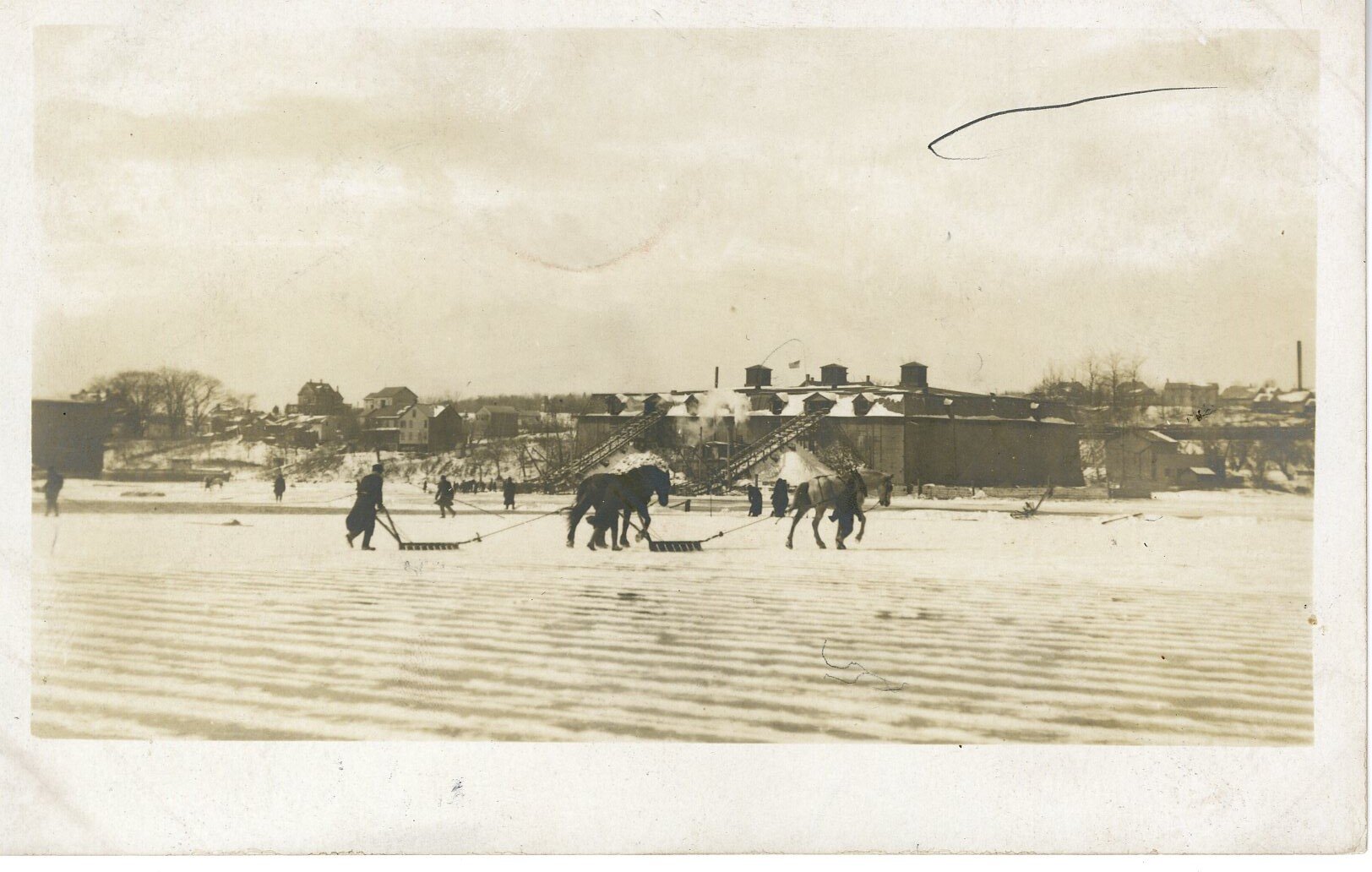The Way We Work(ed): Ice Cutting
“America may well be proud of the ice industry, and may well claim its parentage. It brings comfort to the afflicted, it puts sweetness and purity in the place of decay, and by wasting gives up its own life to save lives greater and more valuable.” - Robert Maclay
Ice being cut from the Hudson River near Castleton, New York.
The use of ice as an article of commercial importance dates back from early in the 19th century. However, prior to that commercialization, ice was used in a variety of ways. According to One Hundred Years of American Commerce (1795-1895), ice has been noted in documentation to be used for cooling liquors at the tables of the wealthy as well as being sold in the shops and peddled upon the streets of Rome.
An illustration of the progress of ice exportation from One Hundred Years of American Commerce (1795-1895).
The early 19th century saw the rise of cargo shipments of ice from Eastern ports to the South, with ice being shipped to foreign ports as far as the East Indies. (See chart to the left.)
Of course, alongside ice cutting was the manufacturing of ice tools and machinery. These “grippers” or “tongs” (see below) were used to move large blocks of ice from the Iceman’s wagon or tuck to ice boxes in the kitchens or private homes, hotels, restaurants, etc., where they kept perishable foods, drinks, and other things cold.
Ice blocks had to be harvested in the winter on lakes, ponds, and rivers and placed in ice houses between the layers of straw or sawdust to keep well in to the summer months.
Many farms had their own ice houses to preserve ice from nearby ponds. City dwellers could get their ice delivered, often by the same companies that delivered coal and oil for heating. Although Dr. John Gorrie patented a mechanical ice maker in 1845, it wasn’t until 1928 with the creation of Freon that modern refrigeration became possible.



